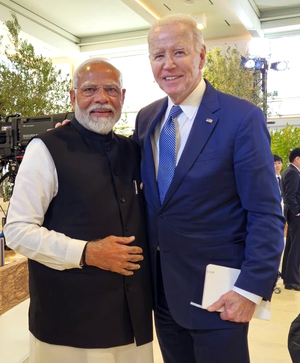One of your friends requires money urgently but there are no banks or ATMs in sight. Here’s what you do: Switch on the data connection on your mobile, open your bank’s app and transfer the amount to your friend’s account, which flows into his account instantly. You have just completed a banking transaction in less than 5 minutes, without visiting a bank. Welcome to the age of Internet banking!The Indian banking industry is one of the largest beneficiaries of all the technological advancements in recent years. Internet-based banking,in particular, has transformed the financial sector.Internet banking or online banking is a service wherein customers can access their account through an internet-enabled device by visiting the specific bank’s website. You login using a secured username and password or PIN to conduct all your transactions from any place, thereby eliminating the need to visit the branch.The history of Internet Banking in India is 21 years old. It was first introduced in India by a private bank in the year 1996. With the launch of dial-up connections and increased internet penetration that came about in the years to follow, more private sector banks started to launch online banking facilities for their customers.Nationalised banks, though hesitant in the beginning, had to eventually take the plunge by 2001, with State Bank of India leading the way.Once banking institutions started viewing online banking as an extension of their bank and not just an add-on service, the term “Anytime and Anywhere Banking” gained ground.To offer internet banking facilities was not only the need of the hour but it helped banks to lower their transaction costs, expand their presence across geographies, lessen employee workload, acquire new businesses and most importantly, to position themselves as tech-savvy banks to their younger customers.Things started evolving from then onwards and a variety of channels have come up based on the internet, such as Mobile banking, Tablet banking, ATM banking, Social banking, Virtual wallets etc.Benefits of Internet BankingThe reason for the exponential growth of internet banking is the numerous advantages that it has over traditional banking methods. Some of them are:Saving Time: This is the primary benefit of banking online. Time is equated to money in this fast-paced life of ours, and nobody can afford to waste time for very simple banking tasks. Just think how convenient it is now to check your account balance, pay bills, transfer funds, open deposits, buy stocks etc. – from the comfort of your home or office with a click of a button either on your computer or mobile phone. No queues, no waiting, and no missed appointments.Easy to Track: Noting down your expenses in books is long gone. Customers can view or download their transaction history for all their bank accounts by logging into their individual, internet banking panel. While families can use them to keep track of their monthly budget, business persons can use it to verify smooth cashflow for their business. This not only saves a lot of time but also paper!User Friendliness: The user-friendly interface of internet and mobile banking services is infusing confidence among those who are new to online transactions. Instead of filling challans or forms that may results in errors, we can now instantly withdraw money through ATMs using debit/credit cards. Funds transfer, such as NEFT, RTGS and IMPS through netbanking, are greatly reducing the paperwork for uneducated masses as well.Premium Services at a Click: Who said internet banking is limited only to banking activities? You can buy movie tickets for your family, travel in cabs comfortably, order flowers for your loved one or go on a vacation – all with a single, internet banking enabled bank account. E-commerce has opened a huge window of opportunity for consumers across India to experience the best on offer.Banks too reap benefits through increased usage of internet and other latest technological methods of banking. Here’s how they get to gain from your usage:Customer Relationship: This is the foremost factor to switch to internet banking, from the bank’s perspective. By offering these online facilities, customers are made to feel comfortable with the bank as there is less human intervention. In a way, it also helps in bringing down fraud and misappropriation of customer funds, which boosts the bank’s image.Above all, the banks are able to offer customised products, such as investment ideas, savings schemes etc., to its customers armed with their account data.Reduction in Costs: By taking all banking transactions online, banks are able to cut down their paperwork. This helps them in better management of available records, increased accountability and reduces transaction costs.Better Interest Rates: The overhead cost of banks decreases when many of their customers transact online. The investment incurred on real estate, workforce, stationary, interiors is kept low, which provides them with an opportunity to offer better interest rates on deposits and low rates on loans.Employee Efficiency: When most of the customers rely on internet banking for majority of their transactions, employees at the branch get more time to concentrate on improving the bank’s business. It leads to improved efficiency among the staff members that leads to an increase in the bank’s profitability.Role of Internet Banking Post DemonetisationIn November 2016, Narendra Modi, the Indian Prime Minister, in a bid to curb black money, made an announcement declaring the high denomination currency notes of Rs. 1000 and Rs. 500 void. This news sent shockwaves throughout the country as India was still a cash economy with majority of transactions being done in cash.By scrapping Rs. 1000 and Rs. 500 notes overnight, 86% of the currency in circulation was sucked out of the system, which resulted in consumption and business activities getting hurt.Post the demonetisation, India underwent a cashless revolution without normal life being impacted greatly.But even before demonetisation, cashless payments were growing. The highlights of the report released by RBI bear a retelling:Cashless payments in October 2016 increased 22%, compared to October 2015IMPS transfers grew 150% over 12 months ending October 2016Mobile banking transactions grew 175%Unified Payments Interface (UPI): 1.4 million transactions till December 2016From the numbers, it is quite clear that people had started to use non-cash payment methods, such as internet banking, mobile banking, mobile wallets and debit/credit cards, to buy or pay for products and complete their financial transactions even before demonetisation.The surge in numbers can mainly be attributed to the widespread usage of mobile phones and high-speed internet data connections offered by telecom operators for cheaper prices.Post demonetisation, it grew further, with many more shopkeepers, vendors and wholesalers accepting payments through credit cards and debit cards. Swiping machines were made available even in petty shops to avoid loss of customers and business. Petrol bunks, taxi and auto drivers turned towards mobile wallets to accept money from customers for their rides.Online e-commerce stores are also offering offers, discounts and cashbacks for purchases made through debit or credit cards. This also enables people to use plastic money and net banking facilities to pay for their purchases.With the launch of high-speed 4G services, accessing internet on-the-go is not a tedious task anymore. Telecom companies have started offering data packs for a fraction of the cost, making it easy for anyone to get on to the internet.The Future of Internet Banking in IndiaAccording to a report by the Internet and Mobile Association of India, about two-third of internet users accessed the internet through their mobile phones in 2015.As per current statisticsIndia ranks second in the world with 348 million internet users, next only to China.Only 26 percent of the Indian population accessed the internet in 2016.By 2021, the Indian internet user base is forecasted to reach 555.3 million, covering 44% of the country’s total population.Therefore, with more mobile phone users coming online in the upcoming years, internet based banking is here to stay – for convenience and flexibility. In fact, it shall become unavoidable as more e-commerce services are launched around this cashless ecosystem.Anyone who wishes to open a bank account in the near future, can be assured on these following facilities from their banks:Intuitive Banking Options through InternetExclusive Offers and Tie-ups with BrandsAttractive Incentives and CashbacksBetter Rates on Loans and Deposits Personalized Banking ProductsSuperior Customer ServiceTo attract the current tech-savvy generation, banks have already also started leveraging social networks, such as Facebook and Twitter, to offer banking services. A few others are even exploring ways to employ robots to provide basic information to customers visiting their branches.This shift towards a digital and cashless economy is a necessity not only for the nation but also for individuals as it offers more benefits than shortcomings.So, strap on your seat belts and get ready to ride the information highway with fast and efficient new-age internet banking facilities.








